I want to second Walter Pall's recommendation to join, or at least attend a few meetings and shows of the local Johannesburg bonsai club. Bonsai is a 3 dimensional art, you can not learn the spacial aspects only from 2 dimensional media. The 4th dimension is time. Also crucial, is getting a good concept of time, when to perform what. And the more local your learning sources are, the less adjusting of the calendar you need to do for your individual microclimate. Advise from someone who knows your climate is much more valuable than advice from anywhere else in the world. So please, at least attend local shows, to see others trees, and catch the occasional meeting. If you are lucky you will meet other people you like enough to befriend, and you can encourage each other in developing bonsai.
I am not well versed in Chinese aesthetic. When creating a bonsai, it is more like creating a sculpture. It is art, in art there are no "rules" that are absolute. But when looking at and assessing a bonsai, the different aesthetics are useful in sorting out areas where we are not confident of the artistic quality, whether an area adds to the image, or detracts. The Japanese and Chinese aesthetics value different aspects differently. I use what I know of Japanese aesthetics to guide me in areas where the "correct artistic choice", is not obvious. The "rules of aesthetics" are used when you are not certain what to do to improve a part of the tree or aspect of the tree. I often repeat some of the "formulas" to design a tree when asked. The formulas, surprisingly do not result in formulaic trees, because the random chaos of nature foils any attempt to rigidly follow a formula.
A couple formulas - branches, as much as possible should be largest diameter lowest in the tree and get progressively thinner up the tree. As a general rule a branch, even a main branch should not be more than 50% the diameter of the trunk. (you can occasionally drift a little higher) too large a diameter branch indicates a shrub, versus tree.
As a general rule - the trunk and main sub-trunks will be the lowest 1/3rd of the tree, the middle 1/3rd will be first and second degree of branching, and the outer 1/3 will be the finest branches and leaves. This is not absolute, but a good general guideline. Since not all branches go vertical, think of these distances as distance out from the nebari.
A messy nebari is generally a negative. Just as crossing or tangled branches are considered less than ideal, crossing roots are considered visually disruptive. Just as knotts or clumps in the branches are considered poor, knotted roots are considered a negative.
Ideally, roots should be arranged more or less like the spokes of a wheel, relatively uniform in diameter (some variation is appealing) which allows planting in a very shallow container. Training of the roots is done every time one repots a tree. Never repot a tree without assessing and working the design of the nebari. Then bury the nebari with media.
Generally, while a tree is in development, you keep the nebari buried at least 1 cm below the soil surface. You only expose the nebari after the nebari has been shaped, and the surface roots are near or over 0.7 cm in diameter. (7 mm or approaching 1/2 inch). Fine roots when exposed tend to die due to dehydration, forcing the tree to develop lower downward pointing roots, leading to a volcano mound of roots that prevent potting the tree in a shallow pot.
Taper, the trunk should successively get thinner as you go up the trunk, at a minimum there should be at least 3 step downs in diameter of the trunk, preferably there should be many more steps as to look like a smooth transition.
Where a trunk or branch gets larger in diameter, than its connection to the trunk, or if the trunk bulges higher up in the tree, this is called reversed taper. This is not a ''fatal flaw'', but must be corrected as best as possible. You can remove an over large diameter branch and replace it with a more slender branch, or you can grow the rest of the tree larger, and restrict the growth of the branch that is too large.
Trident - overall an excellent start. You have a good start on taper for the trunk. You have a couple areas where the photo suggests there is reverse taper. If it is there in real life, you need to restrict the growth of the branches on the thick areas and allow the branches in the thin areas to extend. Two seasons of letting growth extend and keeping certain areas pruned tight to slow growth, should correct the problem. See my comments above about nebari, The lopsided one main root is the result of exposing the nebari too early in development and not being aggressive enough in trying to remedy the issue when repotting. This can be fixed, 2 or 3 years can do it.
THe trident has a nice overall shape and style, I like it.
Chinese elm - Nice fat trunk, good start on building taper. The middle trunk needs to increase in diameter, to get larger than the low trunk-branch on the left. So grow that middle trunk out. Use escape branches that will be completely removed later to do so, while working on finer structured branches that you will keep. Similarly to the trident, look at my comments about nebari. For the elm the problems are not as bad as the trident, but like the trident, elm produce roots easily and rapidly, there is no reason to not try to fix its nebari. Over all a tree I would be happy to have on my bench to work on.
Chinese hackberry - This one needs work. The awkward curved branch that is ''up front'', just doesn't work. Like Chinese elm, hackberry is almost botanical silly putty. I would consider removing every single branch (at the correct time of year for max recovery), I would prune this to just a trunk, and start over. At the same time I would fix the roots, that nebari needs major work. I would turn this into a plug of a trunk with almost no roots, pot it up like a cutting and completely re-develop the tree. It is a great species for bonsai.
Japanese maple 'Moonfire' - This tree looks grafted, but the graft looks to be healing fairly smooth. I would say this could become a very nice tree. As long as the graft stays relatively difficult to notice, I would avoid people encouraging you to ''air layer'' the tree. Allow the upper trunk to extend and thicken. I see your final height for this tree as double its current height. I like the red color.
Japanese maple - not bad at all, this one is almost as good as your trident. Very nice start. There is some work to do to make the scars less obtrusive, which can be done by paring down the scars (read up on wound treatment) ot increasing the overall size of the tree. See notes about reverse taper, and growing a tree out of reverse taper. Definitely a nice start.
Liquidambar - I really like what you have done with this one. I would just encourage you to keep on doing what ever you are doing. This is a difficult species to keep proportions right at that small a size. You have done well. I would let the branches get longer, by adding short segments, as you have been doing. So keep it up. It looks great. Do you get enough a chill in autumn to see the wonderful colors liquidambar can develop? That autumn color is their main attraction. I hope you get to see it.
So overall, you have a nice collection, well developed, much better than "sticks in pots", a couple of them are good enough for local club shows. I would not be embarrassed by any of them. Well done.
My comments are offered as help for future improvement, for a person who is self taught, you have done better than I did while I thought I could get by as self taught. Once I realized the value of learning live, in person from others, joined a club and took the occasional workshop, or classes with visiting artists, my bonsai improved enormously. But basically, you got the hang of it, and have done well for not having had any classes. Nice.
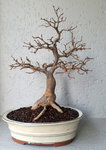 Trident-Maple1.jpg197 KB · Views: 143
Trident-Maple1.jpg197 KB · Views: 143 Trident-Maple01.jpg247.1 KB · Views: 143
Trident-Maple01.jpg247.1 KB · Views: 143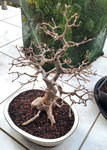 Trident-Maple001.jpg294.2 KB · Views: 125
Trident-Maple001.jpg294.2 KB · Views: 125 Chinese-Elm.jpg275.2 KB · Views: 121
Chinese-Elm.jpg275.2 KB · Views: 121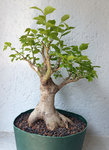 Chinese-Hackberry.jpg201.9 KB · Views: 117
Chinese-Hackberry.jpg201.9 KB · Views: 117 Japense-maple-Moonfire.jpg235 KB · Views: 118
Japense-maple-Moonfire.jpg235 KB · Views: 118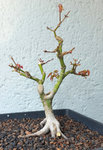 Japense-Maple.jpg235.6 KB · Views: 109
Japense-Maple.jpg235.6 KB · Views: 109 Japense-maple1.jpg297.5 KB · Views: 103
Japense-maple1.jpg297.5 KB · Views: 103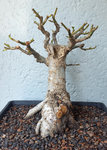 Liquid-Amber.jpg266.5 KB · Views: 97
Liquid-Amber.jpg266.5 KB · Views: 97 Liquid-Amber1.jpg258.3 KB · Views: 107
Liquid-Amber1.jpg258.3 KB · Views: 107
